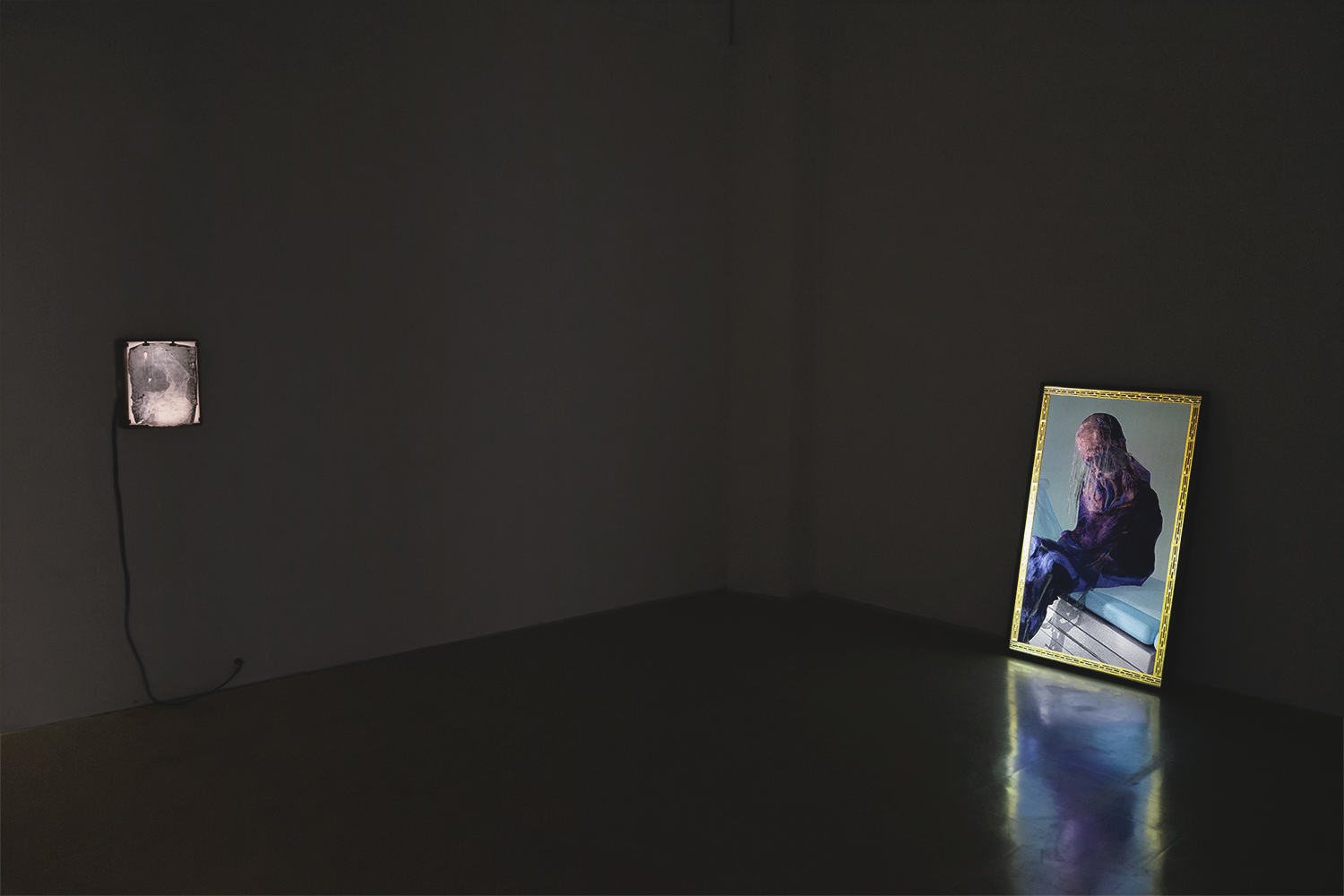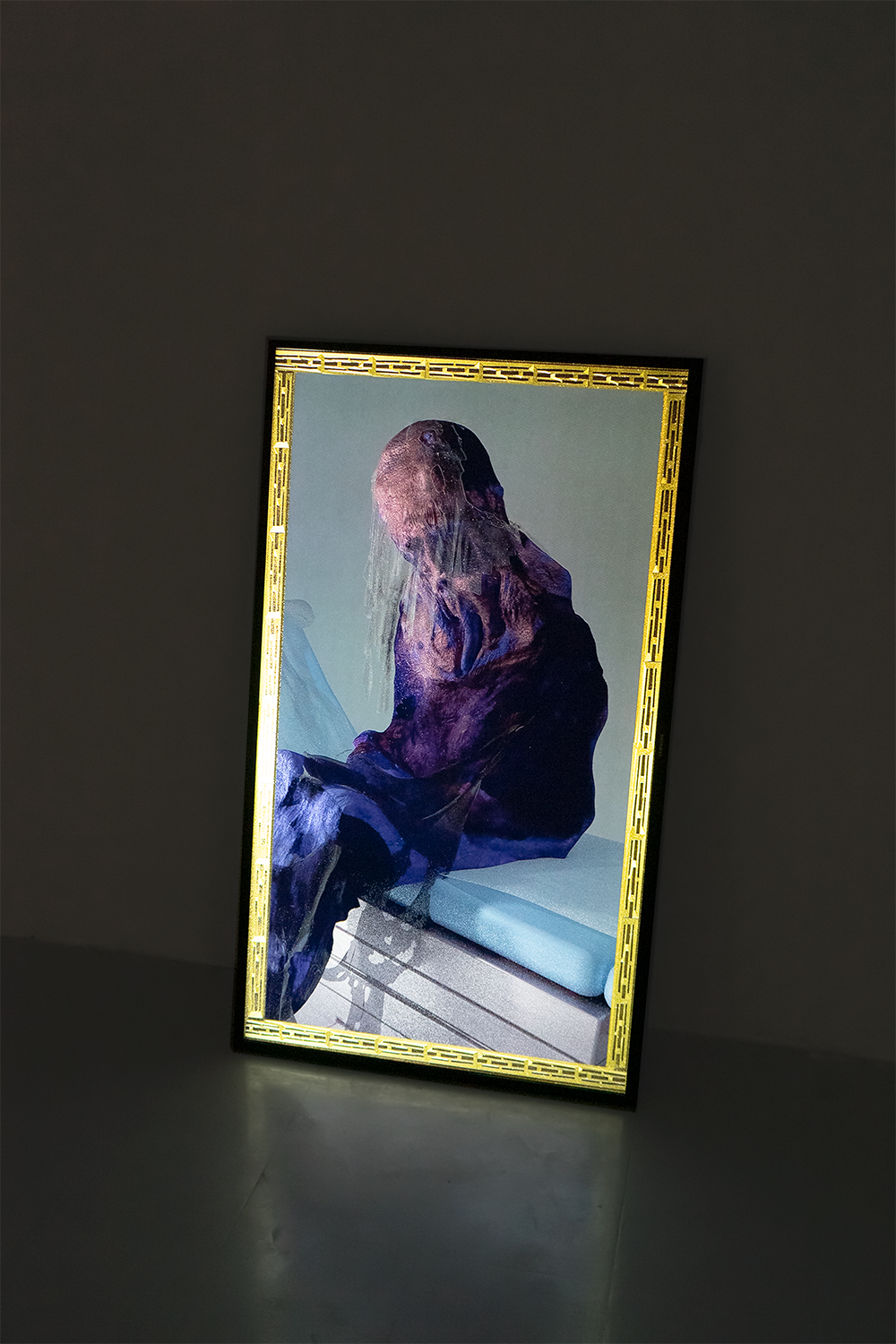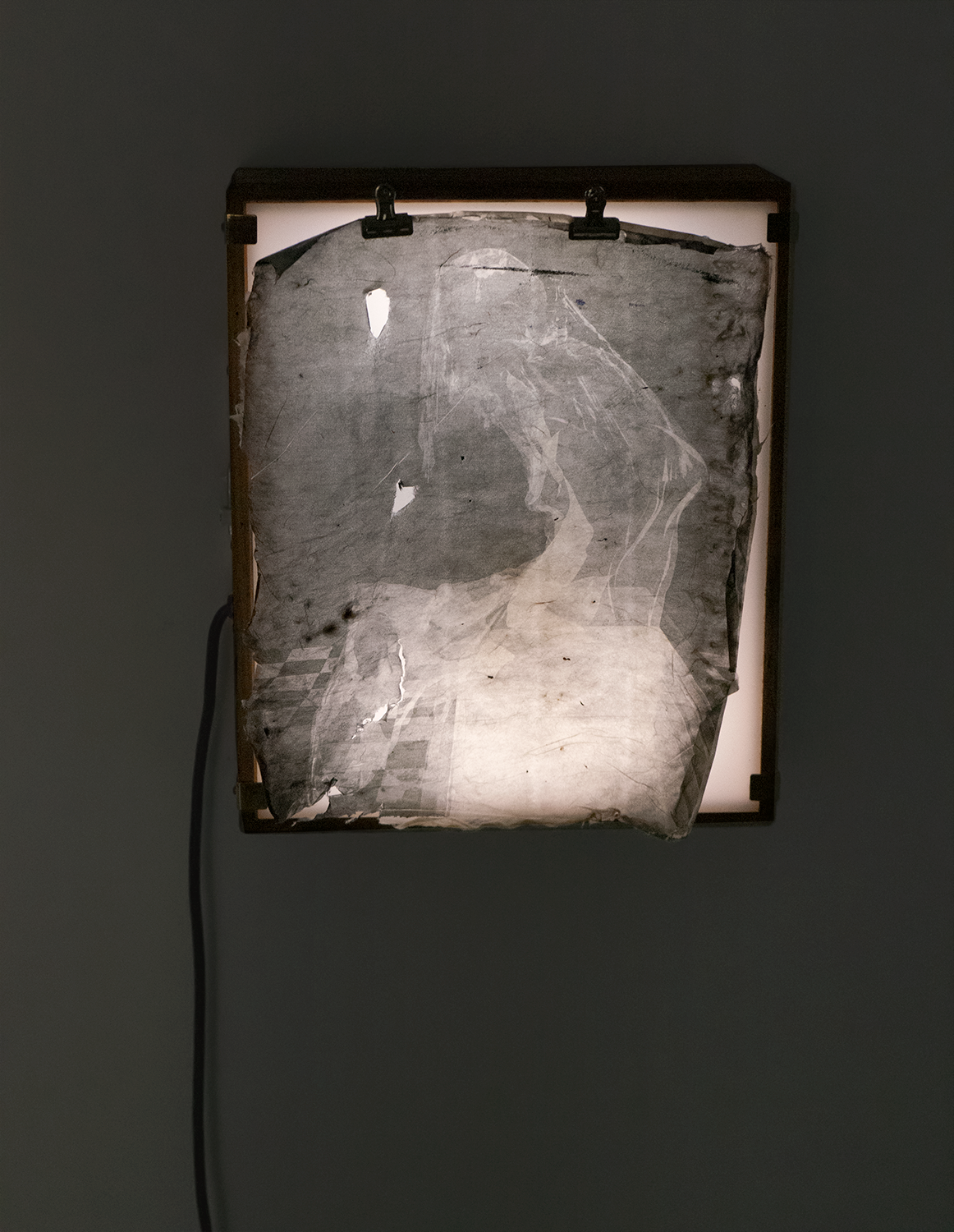Mona Lisa, Actual Age



(3 images)
Image Description: A silent video object on continuous loop in which a large, vertically oriented monitor rests on the floor in a dark room. The video is a fixed camera position, medium-wide 3D animation of a figure; supposedly Mona Lisa as a 500 year-old (her approximate age if she were still alive) turning slightly towards and away from the camera. There is a thin veil dangling from her head like cobwebs. She is in a sterile medical environment, hunched over on a medical exam table. The outer edges of the video are a taken up by a virtual gold frame- a free 3D asset that I downloaded that claims to be the same frame as the one on the original painting.
Visitors to the room in the Louvre where Mona Lisa hangs behind thick glass often refer to the painting as her. These moments of near, yet ultimately failed, transfiguration from painted subject matter to living thing, underscore the imbalanced contract between a representational artwork, or one of its digital copies, and the subject it depicts. Immortality favors the never-lived. Mona Lisa, Actual Age takes the familiar impulse to personify the painting as a departure point to imagine the subject of the Mona Lisa at her actual age in 2018. The video portrait and x-ray depict the five-centuries old figure atop an examination table waiting to be seen.
To this point, I have experienced two different confrontations with my aging body that have likely affected a desire to visualize the subject of a static painting as a grotesque and yet sympathetic animate being. First was the onset of balding in my early twenties, which despite its lack of correlation to my health, made me hyper-aware of the back of my head, where my hair had begun to thin. While this innocuous defect is defined by its visual manifestation, my second defect, an ongoing undiagnosed chronic nausea, is completely internal and frustratingly refuses visualization in tests, scans, and x-rays. By depicting the subject of the Mona Lisa as an approximately 500-year old person, I attempt to visualize the invisible labor behind continuous representation, while also being aware that the video portrait continues to loop (and labor) while I am not present.
In labor and rest, this work explores connections between the subjects of conservation and those of medicine. Both make money for the institutions they are being seen in. The Mona Lisa is protected against irrelevance by hardened economic incentives for its continued physical existence. It is surgically kept as unchanged as possible through conservation, limited rest, and surrounding walls that are painted a deeper shade of yellow to offset the painting’s own yellowing. While modern medicine and artificial intelligence continuously make strives towards eternal consciousness, neither the current medical landscape nor its Renaissance-era equivalent could afford the sitter of the portrait that same longevity or stasis that can be granted to the painting. And while being seen in a doctor’s office implies having someone take the time to consider your ailments, it is also a highly charged/billed and hurried environment that is economically incentivized against patients taking up extended time and space.
Mona Lisa, Actual Age. Appointment confuses the passive historical gaze of this famous painting by placing its subject in an intimate medical environment where her long-term presence subverts a system of accelerated visits. The physical world and its inhabitants are simultaneously more fragile and endangered, yet more photographed, mapped and represented than ever before. Mona Lisa, Actual Age provides an alternative staging of our relationship to representation, opening up the possibility for photographs of ice caps to melt and historical icons to age out of existence. Unlike her habitation at the Louvre, this time-based Mona Lisa asks viewers to consider the subject’s mortality and the medical anomaly of eternal stasis.